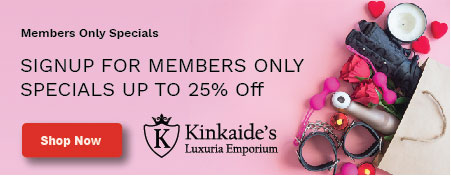Healthy Relationship Boundaries: How to Live Your Best Love Life

Every relationship is different. What is right for you might not be right for another couple. So, what are your healthy relationship boundaries?
Relationships are hard work, and sometimes you might think it’s just easier to stay single! If you think this, don’t feel guilty. It’s normal to wonder if life would be simpler if you were in a different situation. It doesn’t mean you actually want to change where you are in your life, maybe just your healthy relationship boundaries.
If you want a healthy and happy relationship, it’s vital to set healthy relationship boundaries early. Of course, this doesn’t mean that the moment you meet someone you sit down and have ‘the’ talk, but it does mean that as soon as things progress towards the exclusive and serious point, boundaries need to be established.
[Read: How to show respect and better love in your relationship]
What are healthy relationship boundaries exactly?
Boundaries are basically the lines that you will not and do not want to cross.
These boundaries help both partners feel comfortable, happy, supported and without worry or fear that something they’re not comfortable with is going to become a part of their relationship.
For instance, you might not be comfortable with the idea of your partner flirting. That might sounds like a strange boundary to fix, but it should bring a conversation up about what your idea of cheating is, what you will and won’t tolerate, etc. By being clear, you avoid any future problems. [Read: Flirting while in a committed relationship – What you need to know]
Far too many couples end up with problems because they assume that the other partner should automatically know what they want and need and what they don’t want or need. The thing is, you’re not a mind reader. Neither is your partner. By not communicating clearly, you set yourself up for a major drama in the future. Surely it’s easier to just sit down and talk about these things pretty early on?
Boundaries allow you to retain your independence and remain your own person. They allow you to feel safe and comfortable within a relationship and grow together as a couple, without facing problems that make you anxious. There are countless different boundaries you could set. But ensure that whatever you do talk about, lies on the healthy side of the line and isn’t erring into unhealthy territory.
[Read: 14 signs you’re way too codependent and overstepping boundaries]
What is healthy and what is unhealthy?
You can’t just go around setting any old boundary and expecting it to be kept. The idea here is to have a long-lasting relationship which thrives and brings you both joy and happiness. If you set unhealthy or restrictive boundaries, that isn’t going to happen.
Boundaries are not rules. They’re the lines you set in your relationship. For instance, spending time alone. You need to spend time with family and friends and not constantly be with your partner. If your partner is always trying to be by your side and doesn’t give this time to you, that’s one of your boundaries that you should set.
Let’s look at a few healthy relationship boundaries versus unhealthy boundaries here. [Read: New relationship boundaries – 12 lines all new couples must draw early on]
– It is healthy to know that you’re responsible for your happiness. It’s not healthy to feel completely lost and incomplete when your partner isn’t around.
– It is healthy to have friendship and connections outside of your relationship. It’s not healthy to rely upon your partner for your sense of happiness and fulfillment.
– It is healthy to be able to communicate honestly with your partner. It is not healthy to feel fearful of speaking up, or to manipulate or play games with your partner, or for them to do this to you.
– It is healthy to have differences and respect them. It isn’t healthy to point these differences out or become jealous of your partner.
Can you see the differences? Healthy relationship boundaries form the basis of what is healthy and what isn’t. [Read: 15 easy ways to make your relationship way stronger and better]
For instance, if you’re someone who was cheated on in their last relationship, it’s very normal that you might be a little fearful of it happening again. This isn’t something you should try and avoid. It’s part and parcel of your past and the consequences of what your ex-partner did to you. However, it wouldn’t be healthy of you to press those past experiences onto a future partner and to become suspicious and fearful every time they go out. In that case, you move into unhealthy territory.
Boundaries are lines, not rules
By setting boundaries within your relationship, you’re not setting up a rule sheet to print out and give to your partner for future reference. It’s a set of lines that you feel comfortable with. This comes from communicating openly and honestly about what you need from the relationship and what you don’t feel comfortable with.
For instance, you have a hard line that you never want to get married. You might have your own reasons for this, but it’s something you are sure of. It is a boundary for you. It would be unhealthy if you simply pushed this onto your partner and said ‘take it or leave it’. But it would be healthy if you sat down and discussed it with your partner, explaining your reasons and exploring other options that you were both happy with or open to in the future. [Read: How to compromise in a relationship and not feel like you lost out]
Of course, there are some boundaries that should never be crossed and should be communicated clearly. Anything related to your sex life, anything that you’re simply not comfortable with and never want to try or happen, this should be communicated and respected. The same goes for anything which your partner communicates to you.
It’s all about talking and exploring your relationship together, within the boundaries of what is healthy and what isn’t. Boundaries are there to help people feel comfortable. When you feel that way, you’re able to thrive and grow within a relationship.
Healthy relationship boundaries ensure that your relationship never starts to move into territory that you feel uncomfortable with, restricted within, or unhappy about. Of course, this is two-sided and ensures that your partner feels the same way. [Read: 25 things couples in happy relationships always talk about]
When to have the conversation
Set your boundaries together, as early as possible, but not too early.
You can set healthy relationship boundaries without having a conversation. For instance, the way you act early in a relationship sets out what you will and won’t tolerate. If your partner does something which you’re not happy about or not comfortable with, communication about that particular issue will show that a boundary has been put into place.
It’s not about sitting down with a pen and paper and writing a list of things that are boundaries for you both. It’s about finding your way together but communicating your needs, wants, desires, and fears. By sitting down and saying “right, we need to set some boundaries,” you run the risk of scaring your new beau right off! [Read: Your complete guide to building a healthy relationship]
All you need to do is be sure of what you want and what you don’t want. Then, communicate these throughout the relationship. Of course, part and parcel of communication is listening. Listen to the same information coming from your partner. By doing that, you don’t need to sit down and have a heavy conversation, unless something serious happens.
[Read: 15 clear rules to set healthy boundaries in any relationship]
Healthy relationship boundaries are often unspoken. However, it’s important to be as open and honest with your partner as possible. By talking things through, you can create a long-lasting, happy relationship.
Liked what you just read? Like us on Facebook Twitter Pinterest and we promise, we’ll be your lucky charm to a beautiful love life.




